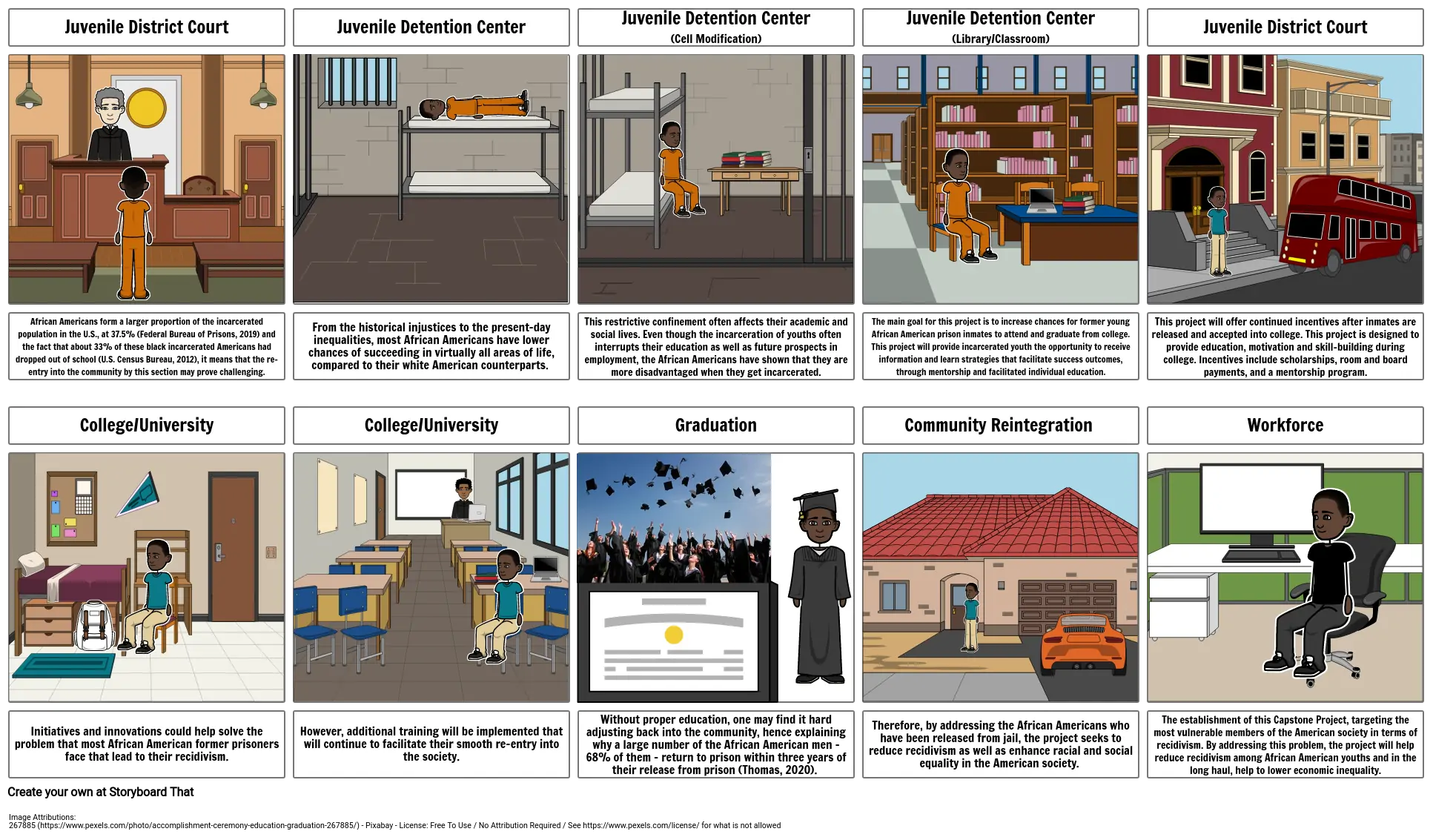
Storyboard Text
- Juvenile District Court
- Juvenile Detention Center
- Juvenile Detention Center(Cell Modification)
- Juvenile Detention Center(Library/Classroom)
- Juvenile District Court
- African Americans form a larger proportion of the incarcerated population in the U.S., at 37.5% (Federal Bureau of Prisons, 2019) and the fact that about 33% of these black incarcerated Americans had dropped out of school (U.S. Census Bureau, 2012), it means that the re-entry into the community by this section may prove challenging.
- College/University
- From the historical injustices to the present-day inequalities, most African Americans have lower chances of succeeding in virtually all areas of life, compared to their white American counterparts.
- College/University
- This restrictive confinement often affects their academic and social lives. Even though the incarceration of youths often interrupts their education as well as future prospects in employment, the African Americans have shown that they are more disadvantaged when they get incarcerated.
- Graduation
- The main goal for this project is to increase chances for former young African American prison inmates to attend and graduate from college. This project will provide incarcerated youth the opportunity to receive information and learn strategies that facilitate success outcomes, through mentorship and facilitated individual education.
- Community Reintegration
- This project will offer continued incentives after inmates are released and accepted into college. This project is designed to provide education, motivation and skill-building during college. Incentives include scholarships, room and board payments, and a mentorship program.
- Workforce
- Initiatives and innovations could help solve the problem that most African American former prisoners face that lead to their recidivism.
- However, additional training will be implemented that will continue to facilitate their smooth re-entry into the society.
- Without proper education, one may find it hard adjusting back into the community, hence explaining why a large number of the African American men – 68% of them – return to prison within three years of their release from prison (Thomas, 2020).
- Therefore, by addressing the African Americans who have been released from jail, the project seeks to reduce recidivism as well as enhance racial and social equality in the American society.
- The establishment of this Capstone Project, targeting the most vulnerable members of the American society in terms of recidivism. By addressing this problem, the project will help reduce recidivism among African American youths and in the long haul, help to lower economic inequality.
- Image Attributions:267885 (https://www.pexels.com/photo/accomplishment-ceremony-education-graduation-267885/) - Pixabay - License: Free To Use / No Attribution Required / See https://www.pexels.com/license/ for what is not allowed
Image Attributions
- 267885 - Pixabay - (License Free To Use / No Attribution Required / See https://www.pexels.com/license/ for what is not allowed )
Over 30 Million Storyboards Created
No Downloads, No Credit Card, and No Login Needed to Try!
